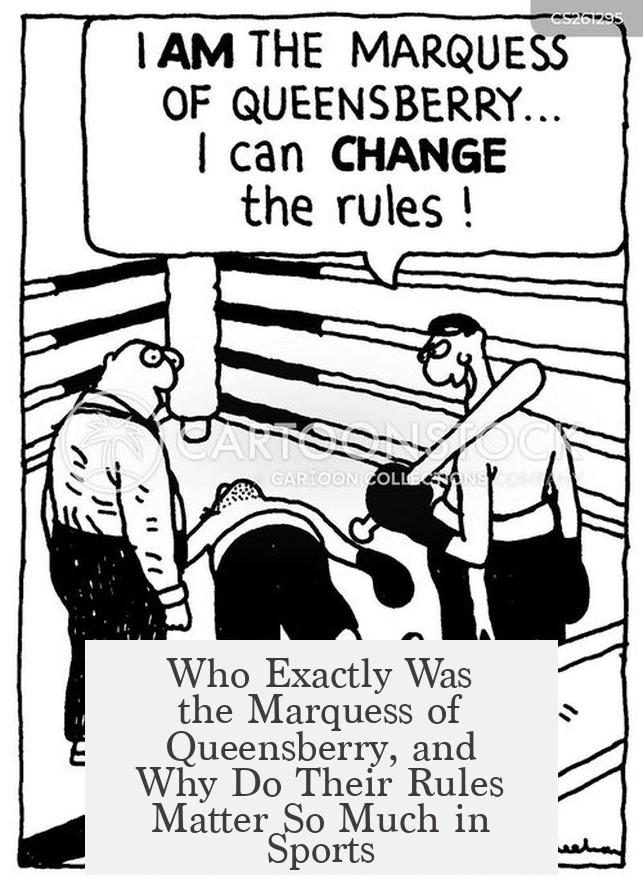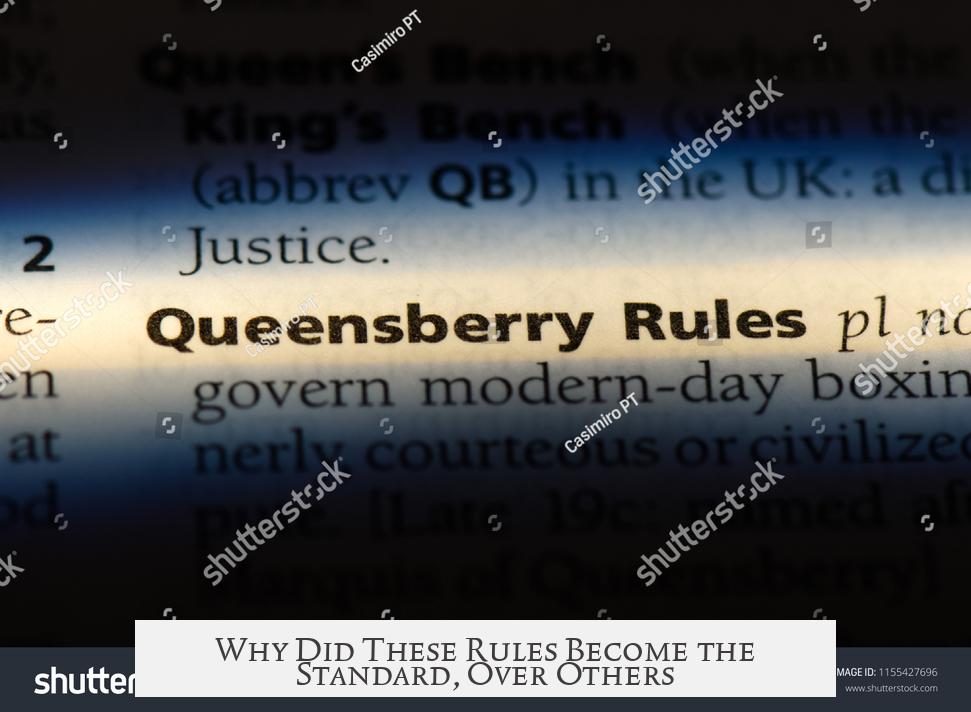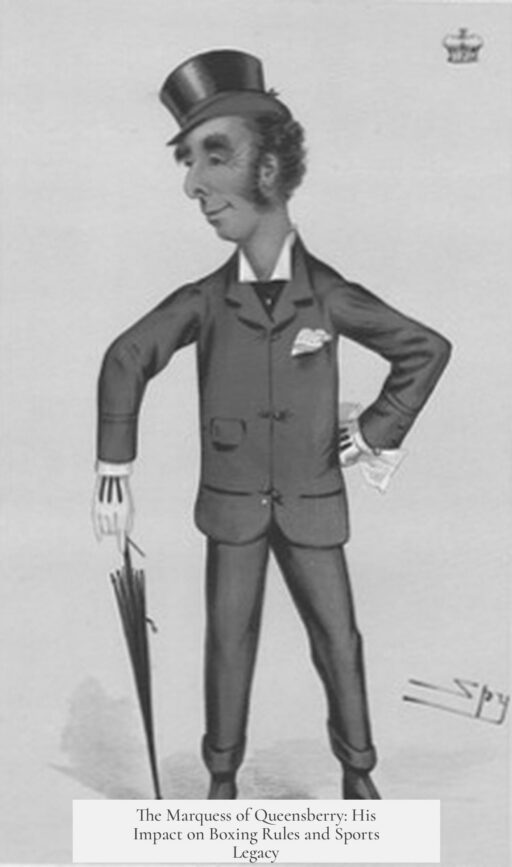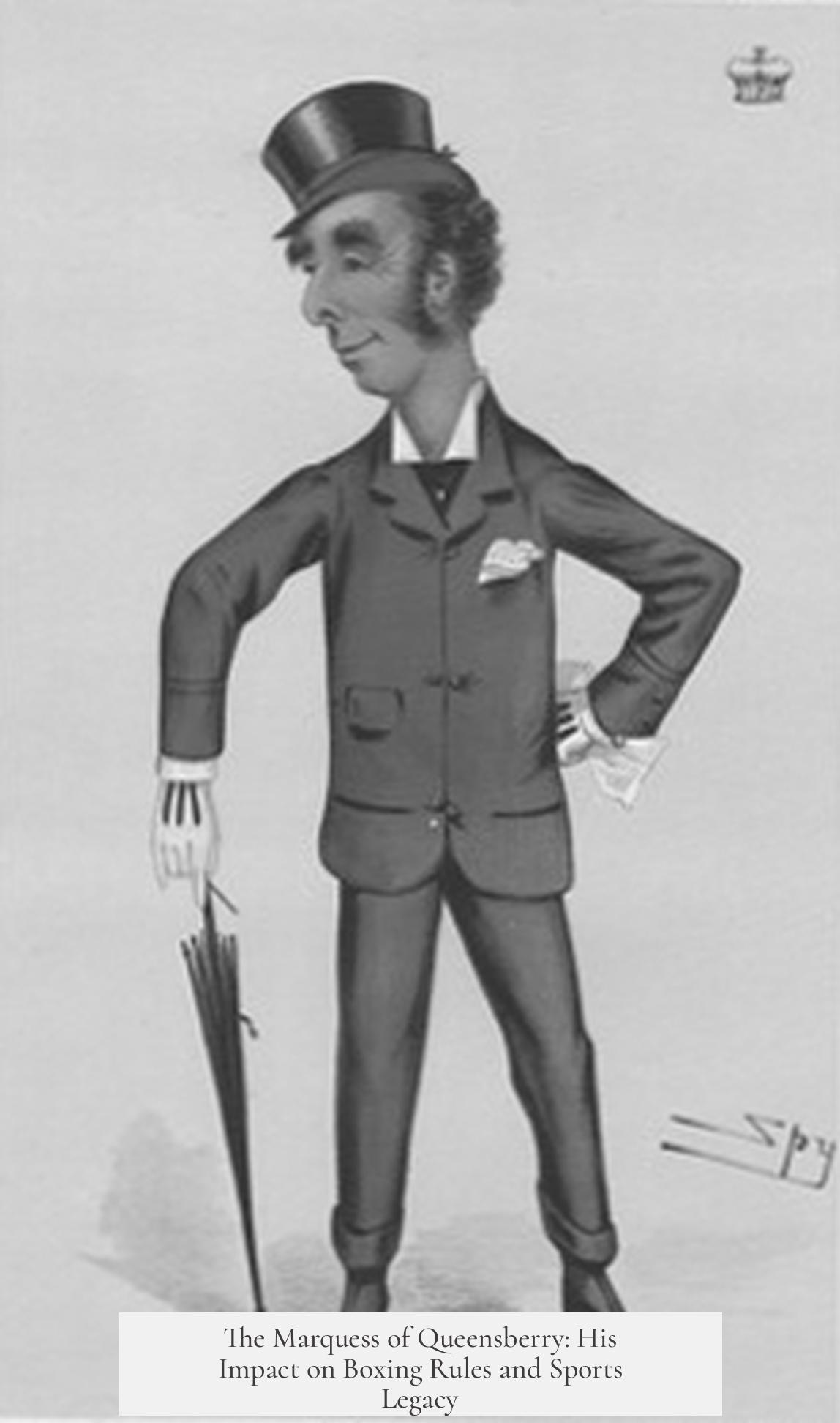The “Marquess of Queensberry” refers specifically to John Sholto Douglas, 9th Marquess of Queensberry (1844–1900). He gained fame primarily for lending his name and sponsorship to a set of boxing rules crafted in the mid-19th century, which transformed the sport. These rules, known as the Queensberry Rules, became the definitive standard for modern boxing and influenced athletics broadly.
John Sholto Douglas inherited the title of Marquess of Queensberry at age 14 after his father’s death in 1858. He gained a reputation as a patron of sports, especially boxing, although he was known for a harsh and aggressive character. Queensberry played a key role in organizing sport at a national level. He was a co-founder and sponsor of the Amateur Athletic Club (AAC) in 1866. The AAC was the world’s first national governing body for athletics, which eventually evolved into the Amateur Athletic Association of England and later England Athletics.
The significance of Queensberry’s name in boxing dates to 1867 when he sponsored a set of boxing regulations originally drafted by John Graham Chambers in 1865. These rules brought new structure and safety features to boxing. Though not the sole author, Queensberry’s status and influence helped popularize these reforms. Hence, they were published under his name as the Queensberry Rules.
The Queensberry Rules introduced several pioneering changes. They mandated boxing gloves, replacing the brutality of bare-knuckle fights. The rules called for three-minute rounds separated by one-minute rests. They prohibited wrestling and hugging during fights, emphasizing a pure stand-up boxing style. Specific guidelines governed knockdowns: a fighter had 10 seconds to stand unassisted before the referee could award victory to the opponent. The rules outlawed boots with springs and required fair-sized, high-quality gloves. Additional provisions limited interference, designated ring size around 24 feet, and regulated the presence of seconds outside the ring during rounds.
| Key Queensberry Rule | Description |
|---|---|
| Gloves Mandatory | Boxers must wear quality boxing gloves (Rule 8). |
| Round Structure | Three-minute rounds, one-minute rests (Rule 3). |
| No Wrestling | Wrestling and hugging banned (Rule 2). |
| Knockdown Timing | 10 seconds to rise unassisted, or opponent wins (Rule 4). |
The introduction of gloves under the Queensberry Rules marked a turning point, reducing injury severity and moving boxing toward a regulated, sport-oriented contest. This shift aligned with broader societal desires for safer sport and disdain for bare-knuckle violence.
Bare-knuckle boxing persisted into the 1880s but faced increasing legal suppression. The resulting underground status diminished its visibility and appeal. Simultaneously, the Queensberry Rules gained traction among promoters and athletes, aligning with changing norms and the rise of organized boxing clubs. The Queensberry Rules offered legitimacy, safety, and clearer structure, making them more attractive than older codes.
The Marquess of Queensberry’s sponsorship played a critical symbolic role. His aristocratic status lent authority and credibility to the rules. Without his backing, boxing might have struggled longer to shed its rough, lawless image. Through his involvement, these rules became the foundational framework for modern boxing and influenced athletics governance through the AAC.
In summary, the “Marquess of Queensberry” was John Sholto Douglas, a nobleman and sports patron who supported a new set of boxing regulations. These Queensberry Rules mandated gloves, specified round lengths, prohibited wrestling, and introduced standardized procedures that prioritized fair play and safety. Their importance stems from their timing—promoted during a period of social and legal shifts, they replaced bare-knuckle contests and ushered in organized, regulated sport. The rules’ practicality, coupled with Queensberry’s status and the founding of key athletic bodies, cemented their adoption as the global standard.
- John Sholto Douglas was the 9th Marquess of Queensberry (1844–1900).
- He co-founded the Amateur Athletic Club in 1866, influencing sport governance.
- The Queensberry Rules, published under his name in 1867, introduced gloves and regulated round times.
- Rules banned wrestling and defined knockdown procedures for fairness and safety.
- The rules gained prominence as bare-knuckle boxing declined amid legal pressures.
- Queensberry’s aristocratic endorsement helped standardize boxing worldwide.
- The rules shaped modern boxing and influenced athletics regulation.
Who Exactly Was the Marquess of Queensberry, and Why Do Their Rules Matter So Much in Sports?

The Marquess of Queensberry refers specifically to John Sholto Douglas, 9th Marquess of Queensberry — a man whose name is practically synonymous with modern boxing rules. Born in 1844, Douglas inherited the title at the age of 14 after his father’s death. Though known for a brusque personality, he played a pivotal role in shaping the sport of boxing and athletics as we know them today.
But who was he really, beyond the title? And why did the “Queensberry Rules” become the gold standard in boxing, eclipsing earlier regulations? Let’s get into the heart of it.
John Sholto Douglas: The Man Behind the Title
John Sholto Douglas gained the Marquess of Queensberry title in 1858. Before then, he was Viscount Drumlanrig. Despite a reputation for being a bit rough around the edges, Douglas was a genuine patron of sports—especially boxing. His role went deeper than casual support.
In 1866, Douglas was among the key founders of the Amateur Athletic Club (AAC), the world’s first national governing body for athletics. Today, this organization is known as England Athletics, having evolved over time. Douglas’ influence in establishing formal sports bodies was significant. This emerging formalism paved the way for standardizing rules across sports.
The Queensberry Rules: Boxing’s Game Changer
Now, here’s where things start to get interesting. The rules known as the “Queensberry Rules” were actually written by John Graham Chambers, a Welsh sportsman, in 1865. But why associate them with Queensberry? Because Douglas sponsored the publication of these rules in 1867, and they bore his name. Talk about brand power!
These rules weren’t just ink on paper; they marked a major shift in how boxing was practiced:
- Fighting had to occur in a 24-foot ring (or as close as possible to it).
- Wrestling and hugging in the ring? Absolutely banned.
- Rounds were standardized to three minutes, with one minute breaks.
- If a fighter fell, he had to get up unassisted in 10 seconds, or the match could be awarded to his opponent.
- The first mandatory use of gloves in boxing—gone were the brutal bare-knuckle days.
- No seconds allowed in the ring during rounds to prevent foul play.
- Strikes against a man on one knee were prohibited.
In short, these rules turned boxing from a brutal, sometimes lawless brawl into a sport with structure, safety, and fairness. This was no small feat for boxing’s image.
Why Did These Rules Become the Standard, Over Others?

Let’s be clear: the Queensberry Rules weren’t the first boxing rules ever. Before this, the London Prize Ring Rules governed fights, allowing wrestling moves that modern fans might find shocking. Bare-knuckle boxing was still prevalent.
But cultural tastes were changing. The nineteenth century saw increasing resistance to the violent and chaotic bare-knuckle bouts. Authorities cracked down, pushing these fights underground by the 1880s. This timing was crucial.
Glove-wearing bouts, as mandated by the Queensberry Rules, offered a cleaner, safer alternative. The gloves reduced cuts and some injuries, making the sport more respectable. This shift aligned perfectly with changing public attitudes toward sportsmanship and safety.
Moreover, the formalization of round lengths and rest periods ensured fighters had structured opportunities to recover, reducing the likelihood of prolonged beatings. No more ambiguous “to the death” matches. These measures made matches more competitive rather than chaotic.
Douglas’ sponsorship and his association with the AAC boosted the rules’ credibility. Being tied to a national athletic body gave them an official aura. People did not just accept the rules because they were better; they accepted them because they symbolized the future of boxing—a more civilized future.
The Impact on Sports and Legacy
The Queensberry Rules didn’t just influence boxing. Their principles seeped into other sports, emphasizing fairness, safety, and clear regulations. This echoes today in virtually every combat sport worldwide. Can you imagine MMA without gloves or no time limits?
Douglas’ dual role as a sports patron and nobleman created a powerful mix that changed sport forever. Even if he was a “brutish man” by character, his legacy paved the way for millions to enjoy boxing in a safer, more organized setting.
So, What Can We Learn from the Marquess of Queensberry and His Rules?
If you’re an athlete, coach, or simply a sports fan, there’s an important takeaway here:
- Structure matters. Rules like Queensberry’s highlight how clear guidelines transform a risky activity into a sport.
- Safety fosters growth. Introducing gloves and rest times helped boxing gain wider acceptance.
- Timing is everything. The adoption of these rules coincided with societal shifts, which helped them flourish.
- Patronage influences perception. A noble sponsor gave these rules weight that other regulations couldn’t match.
Next time you watch a boxing match, or even just hear the term “Queensberry,” remember it’s not just a snappy name. It’s a symbol of transformation in sports history. John Sholto Douglas, the 9th Marquess, may not have thrown the punches, but he sure helped change the rules of the game forever.
“Queensberry’s rules set the stage for modern sportsmanship. Without those gloves, many champions might have remained bruised legends lost to history.”




